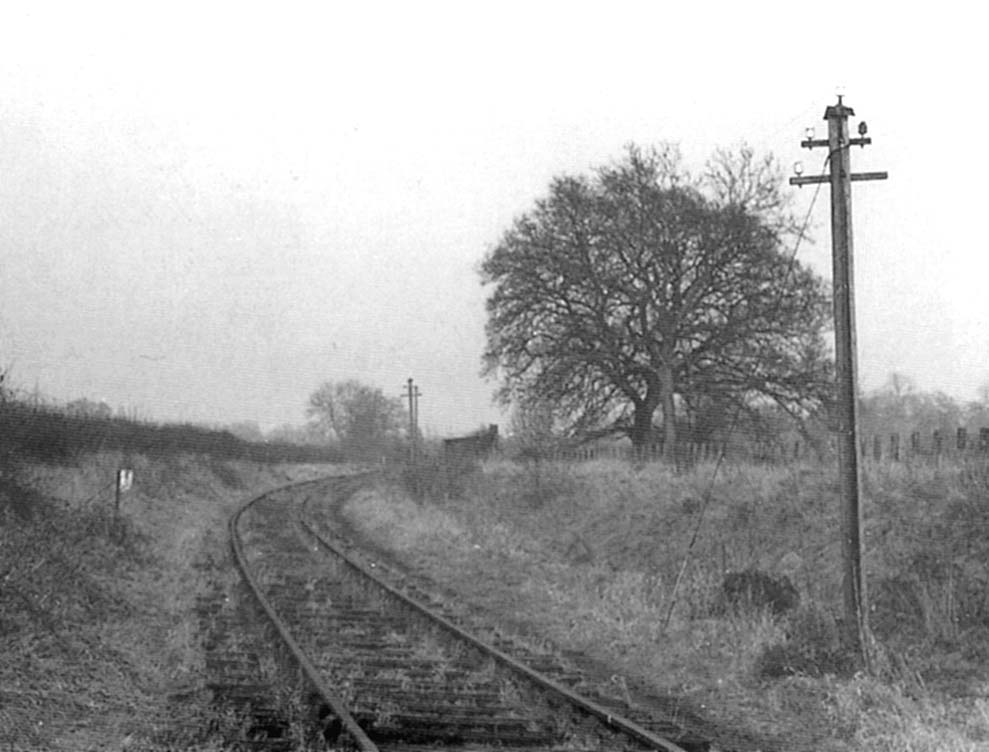|
|
 |
 |
|
GWR Route: Hatton to Bearley and Alcester Branch
Junction
Aston Cantlow: gwrac2297
 |
Looking along the line towards Bearley near the 2½
milepost circa 1950 with a PW hut in the distance circa 1950. Aston Cantlow
Mill was situated in the distance on the right 'just off camera'. In 1905 the
Great Western Railway introduced an ‘Economic System of Maintenance’
for the Alcester branch. A single gang of PW staff became responsible for the
entire six mile branch and were provided with a four wheeled pumped trolley.
This trolley could be man handled on and off the track and was normally kept in
a lineside hut provided with a rail ‘run-off’. For his daily
inspections, the ganger was provided with a three wheel inspection trolley.
When the PW gang wanted to use a trolley on the line, an ‘Occupation
Key’ which was linked to the Branch's Electric Train Tablet system was
withdrawn. This locked the electric Tablet Instruments at Midland's Alcester
Signal Box and Great Western's Bearley (from 1907 Bearley Junction North)
Signal Box preventing tablets being issued to any other trains or locomotives
until the occupation key was replaced. There were six intermediate key boxes
along the line including one at Great Alne Station and these were also provided
with a telephone so that the ganger could speak to the Signalmen. These
intermediate key boxes were distributed along the branch to allow Occupation
Keys to be withdrawn or replaced at (or near to) the point of any work. It is
likely that the PW hut in the photograph was one of these intermediate key
boxes. Before an occupation key was removed the ganger was required to apply
verbally to the Signalman or by telephone stating the following:
(a)
Place or number of instrument from which message is being sent.
(b) Length
of time for which occupation is required
(c) Points between which it is
intended to do the work
When occupation is required for trolleying or
inspection of the line, the points to which the trolley will be run and removed
from the line.
 back back

|
|
|
